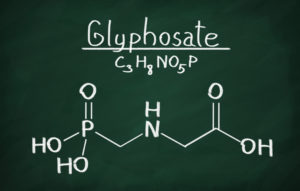** Starbucks and other Coffee Makers Lose Latest Phase of Prop 65 Acrylamide Warning Case **
By: Brent E. Johnson

Background: Acrylamide is a chemical compound first isolated in laboratories in the 1950’s. Since its discovery, it has been used in many industrial applications, such as in the manufacture of polymers, in papermaking, ore processing, oil recovery, and in the manufacture of permanent press fabrics.
Acrylamide was listed by OEHHA as a chemical known to the State of California to cause cancer in 1990 based on studies that showed it produced cancer in laboratory rats and mice. In 2011, it was added to the reproductive and developmental harm list following studies of laboratory animals that showed effects on the growth of offspring exposed in utero as well as genetic damage.
Apart from its industrial uses, in 2002 acrylamide was discovered in foods – in particular starchy, carbohydrate rich plant based foods. The chemical appears to be created when these foods are roasted or fried at temperatures higher than 248 °F – but not in food that had been boiled or steamed. Further, acrylamide levels seem to rise as food is heated for longer periods of time, although researchers are still unsure of the precise mechanisms by which acrylamide is formed. It has been detected irrespective of whether the food is cooked at home, by a restaurant or by commercial food processors and manufacturers. All the good stuff is implicated – french fries, potato chips, other fried and baked snack foods, coffee, roasted nuts, breakfast cereals, crackers, cookies and breads. At present the Prop 65 No Significant Risk Level (NSRL) for acrylamide is 0.2 µg/day. Cal. Code Regs. tit. 27, § 25705 (c)(2).
In 2005, California attorney general Bill Lockyer filed a Prop 65 lawsuit against four makers of French fries and potato chips – H.J. Heinz Co., Frito-Lay, Kettle Foods Inc., and Lance Inc.. People of the State of California v. Frito-Lay, Inc. et al., Case No. BC338956 (Cal. Super. Ct. 2005). The lawsuit was settled in 2008, with the food producers agreeing to reformulate, cutting acrylamide levels to 275 parts per billion (thereby avoiding a Prop 65 warning label). The companies also agreed to pay a combined $3 million in civil penalties.
It was not until 2010 that a private attorney general filed a Prop 65 complaint against the major coffee sellers in California. A number of similar cases were filed and ultimately consolidated in Los Angeles County Superior Court – Council for Education and Research on Toxics v. Starbucks Corp. et al., No. BC435759, and Council for Education and Research on Toxics v. Brad Barry Co. Ltd. et al., No. BC461182. In all, the consolidated litigation involves more than 70 companies including grocery stores, coffee companies, food manufacturers and big-box retailers, such as Whole Foods Market, Trader Joe’s Co., Peet’s Coffee & Tea Inc., Nestle USA Inc., Costco Wholesale Inc. and Wal-Mart Stores.
The first phase of the trial took place in 2014, with a bench trial on several affirmative defenses, including whether acrylamide posed “no significant risk.” Judge Berle ruled in favor of Plaintiff at this phase, rejecting Defendants’ arguments that the level of acrylamide in their coffee products posed no significant risk because a multitude of studies show that coffee consumption does not increase the risk of cancer. The court ruled that the studies assessed the effects of coffee generally, as opposed to the presence of acrylamide in the coffee and were therefore not persuasive. Defendants’ argument that requiring them to post a Prop 65 warning amounted to unconstitutional forced speech was also rejected.
The second phase of the bench trial was held in September of 2017. Several of the defendants settled on the eve of trial, among them were BP, which operates gas stations and convenience stores ($675,000 + warning label); Yum Yum Donuts Inc. ($250,000+ warning label) and 7-Eleven stores ($900,000 + warning label). Starbucks did not settle, although it did begin posting Prop 65 notices in its stores, presumably to limit civil penalties were it unsuccessful at trial.
At the September 2017 trial, Defendants focused their trial strategy on:
- Code Regs. tit. 27, § 25703 (b)(1), which exempts from the normal risk level circumstance where the “chemicals in food are produced by cooking necessary to render the food palatable or to avoid microbiological contamination.” At trial, experts for the defendants testified that there is no commercially viable way to reduce acrylamide in coffee by some other cooking method.
- If § 25703 (b)(1) applies, the statute allows for a higher “alternative risk level” (i.e. not the NSRL of 0.2 µg/day) to apply to chemicals produced in the process of cooking foods if “sound considerations of public health” justify it. As to the appropriate risk level posed by drinking coffee, Defendants’ experts pegged it at up to 19 µg/day of acrylamide in coffee over a lifetime, and otherwise testified that the average person’s exposure to acrylamide in coffee is ten times less. Defendants’ experts also testified that studies found no increased risk of cancer for coffee drinkers, and to the contrary, evidence suggested that moderate coffee consumption is associated with a reduced risk of certain chronic diseases, including certain cancers.
On March 28, 2018, Judge Berle issued a statement of decision under Rule 632 (akin to a preliminary ruling) rejecting the coffee makers’ arguments. Council for Education and Research on Toxics v. Starbucks Corp. et al., No. BC435759 (Cal. Super. Ct. L.A. County March 28, 2018). Judge Berle noted that Prop 65 contemplated an alternative risk level if “public health” justified it. Id. ¶¶ at 75 – 81. But he found that the expert evidence did not persuade him that drinking coffee was strictly speaking a “public health” concern, i.e. that coffee confers a particular benefit to human health. On that basis, the alternative significant risk level defense failed as a threshold matter. Under California procedure, the Defendants can object to these preliminary findings, but it is uncommon for a statement of decision to not ultimately be entered as the judgment. The judge can now set another phase of trial to consider potential civil penalties – up to $2,500 per person exposed each day. In the abstract, that could calculate out to be an astronomical sum, although this preliminary decision may push the parties to the settlement table. We will see who the next target is – acrylamide is after all not just in coffee – but in many cooked and processed foods.


